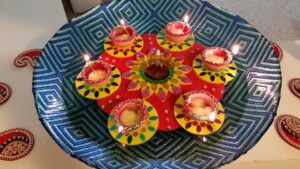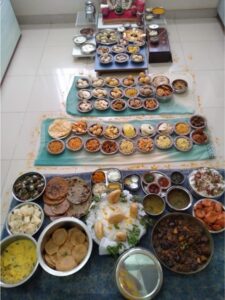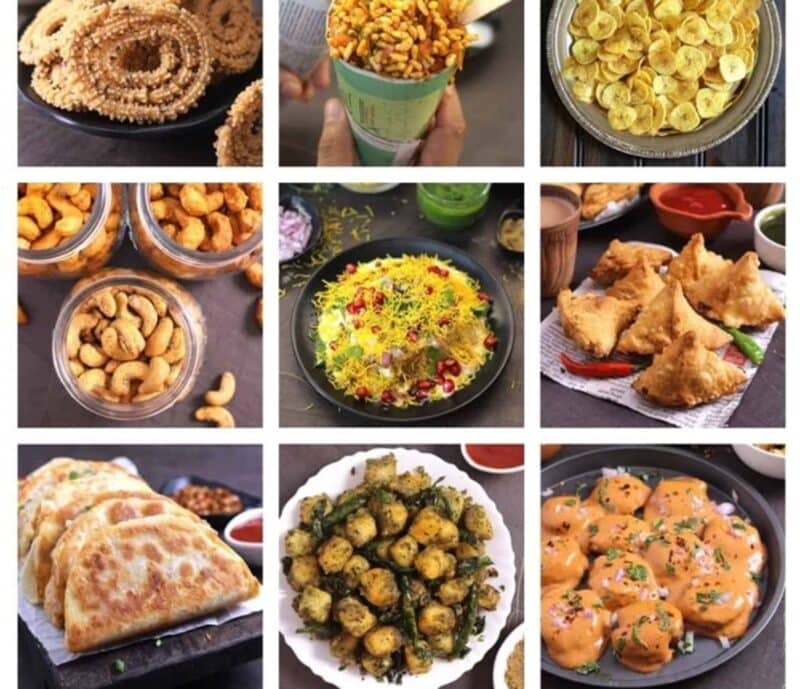Last Updated on November 16, 2022
Traditions and rituals are an important way for friends and families to build and strengthen relationships. When we think about traditions, we typically think about major holidays and food, but the reality is, sitting down for dinner on a Sunday night is one of the simplest, and most practiced traditions.
If we learned anything over the last few years, it’s how important traditions are and how fun new ones can be. Whether they are passed down from generation to generation or a new tradition that has begun, the power of traditions keeps us bonded with friends and family.
At ButcherBox, we believe in the power of gathering around the table to create new memories, traditions, and rituals. In our new series, Gathering Around the Table, we’re leaning on our employees to educate and inspire us about all of the traditions they hold dear.
Stay tuned as we explore the big holiday traditions to the smaller seasonal ones and everything in between with the ButcherBox team. We’re kicking it off with Diwali, one of the biggest festivals in India.
Diwali, pronounced duh·vaa·lee, (also known as Divali or Deepavali) is th

e “Festival of Lights.” It is the biggest festival in India, celebrated by millions of Hindus, Sikhs and Jains across the world. This year, Diwali will be celebrated on October 24. Though technically religious, it is a celebration that includes good food, fireworks, Rangoli (color art in front of homes), and special candles and lamps. In essence, Diwali symbolizes the spiritual “victory of light over darkness, good over evil, and knowledge over ignorance.” It is an opportunity for people to move on, let go of past grudges, and be merry.
Diwali is celebrated over five days and each day has its own significance:
Dhanteras is the first day meaning the worship of wealth. People worship the Goddess Lakshmi, clean and decorate their homes, and occasionally purchase something precious for the new year.
The second day, Naraka Chaturdashi (or Choti Diwali) is centered around the story of the demon Narakaasura. In this tale, the demon ruled with terror, abducting 16,000 daughters of the gods and stealing the earrings of Aditi (mother of the gods). The gods asked Lord Krishna for help, and after a mighty battle, the demon was killed, the girls were freed, and the earrings were recovered. Krishna returned in the very early morning and was bathed with scented oils, leading to the tradition of aromatic oil baths on this day of the festival. After these baths, having removed their sins and impurities through the ritual, people wear new clothes, offer Puja (prayers), and light diyas or set off firecrackers.
Lakshmi Puja is the third day, and the main Diwali festival day. People offer Puja to the Goddess Lakshmi, who is believed to enter homes and provide blessings of good fortune. Lights in various forms, tiny oil diyas, candles, and electric options, are placed around the house, families exchange gifts, and more fireworks are set off in celebration.
Govardhan Puja (or Padva) is the fourth day, when Lord Krishna defeated Indra by lifting the Govardhan Mountain. People worship the mountain on this day, making small hillocks (usually out of cow dung) to symbolize Govardhan.
The fifth and final day of Diwali is Bhai Dooj.Siblings get together for lavish meals on this day and perform a ‘tilak’ ceremony, in which sisters offer prayers for their brothers’ long and happy lives while the brothers offer gifts to their sisters.
We caught up with our colleagues who celebrate Diwali to share the traditions tied to the holiday and what the holiday means to them.
What does Diwali mean for you and your family?
“The night before Diwali my mom would sit me and my brother down and tell us the tale of why we celebrate this epic festival. It was because Lord Ram was coming back home after years in exile and it was a dark night. So, everyone in the country lit rows of Diyas, to guide him home. To “guide him home.” That sentiment always stuck with me. No matter how dark life gets, there’s always light to guide us back home, no matter how far away we wander. Then Diwali became a symbol of hope.” — Sneha S., associate creative director, copy.
“For my family, Diwali signifies the victory of good over evil and the eradication of dark shadows, negativity, and doubts from our lives. There are a lot of traditions we practice, but a lot of the festival is spent gathering with friends and family and honoring our deities.” — Nayan S., principal data engineer I
“It is a special time for every Hindu household, a celebration of giving and selflessness as much as it is a time for prayer for good fortune ahead. It’s always packed with exciting moments, but there’s nothing better than gathering around the table with my family to eat all the traditional sweets and snacks we’ve made.” — Arjun S., product analyst
Do you have any favorite Diwali dishes?
“We make a lot of sweet and savory items for the deities, but one of my favorites is Mango Peda
 (a little, round pastry made with evaporated milk and mango puree).” — Sneha S., manager, financial & budget reporting
(a little, round pastry made with evaporated milk and mango puree).” — Sneha S., manager, financial & budget reporting
“Some of my favorite dishes over the years include suyyam (fried dumplings filled with sweet lentils), laddu (sweet gram flour balls), coconut barfi (coconut cakes), and murukku (spicy, crunchy fried flour treats).” — Arjun S., product analyst
“I really like sweets, called ladoos made out of wheat and rice flour.” — Rijuta W., data engineer III
“We make a lot of snacks in preparation for Diwali, a couple of days before the festival starts. On the first day, mom would only make sweets: Nariyal laddoo, Shakkarpara, Gulab Jamun, and Jalebi. The fragrance of cardamom and ghee would always linger, thick and sweet.” — SnehaS., associate creative director, copy.
What are some of your favorite traditions around Diwali?
“Diwali marks the Hindu New Year and it is considered auspicious to wear new clothing while celebrating the festival. Men put on contemporary styled kurtas and dhotis, while women often wear silk, chiffon or velvet saris along with cigarette pants or ankle-length skirts called lehngas with matching cholis or bodices, gowns or other traditional attire depending on their culture and faith.” — Nayan S., principal data engineer I
“I don’t remember my first Diwali exactly, but as a kid the point of Diwali was fireworks! It wasn’t until I was 6 or 7 years old that I was allowed to participate. “Fireworks are dangerous”, my dad would say. And when I was first allowed to light them, it was only under strict supervision and with “kiddy” fireworks like sparklers. But growing up, each year after that we were free to play with fireworks once we’d finished singing for Goddess Lakshmi and Lord Ganesha. Our friends would gather and bring with them all their favorite fireworks. Once a part of the big pile, everything was everyone’s to use. There was no differentiation of caste, color, or religion. Everyone was welcome and everyone was invited.” — Sneha S., associate creative director, copy.
“On the day of Dhanteras, we have a tradition to dress up our home God with colorful clothes, make sweets for them, decorate them with jewelry. In addition to this, we do a pooja of all belongings (gold, silver, debit cards, car, house etc.). It starts with washing them (small articles) with water, wipe them, put kum kum, rice and panchramrath (combination of milk, curd, ghee, sugar, honey), offer flowers and some cash.” — Sneha S., manager, financial & budget reporting.
Stay tuned for our next installment of Gathering Around the Table!
Evadne Cokeh is ButcherBox's VP of Social and Environmental Responsibility. She is working to develop the company's social and environmental responsibility strategy and is the Chair of ButcherBox's Diversity, Equity, and Inclusion Committee.



